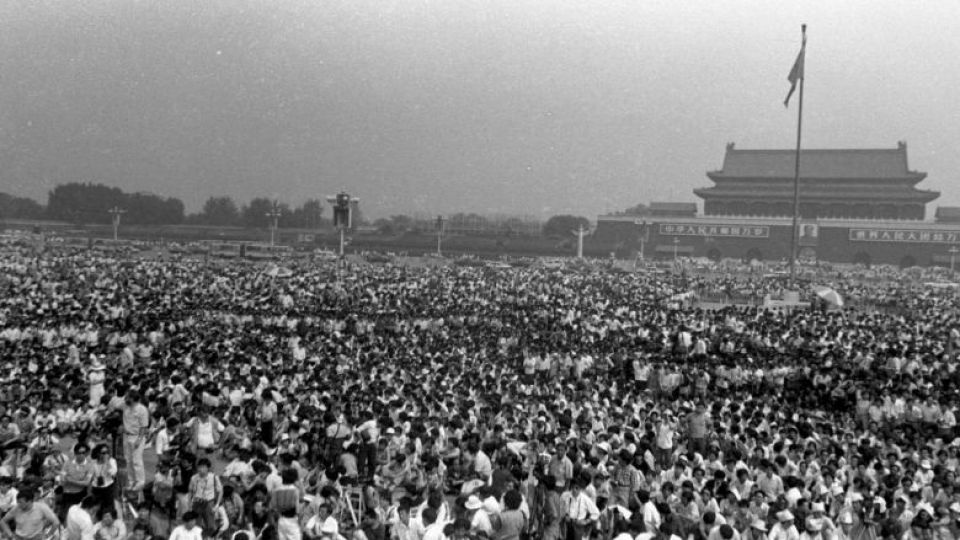June 3, 2019
Tuesday is the 30th anniversary of the crackdown.
Tuesday marks the 30th anniversary of the Tiananmen Square massacre. It was an event that profoundly shaped not only modern China, but also the US-China relationship.
It is the odd anniversary that will pass virtually unobserved in the place where it had the greatest impact. Each year, around the anniversary, the government mobilizes an army of censors and trolls to stamp out any discussion of Tiananmen online.
Yet for the world outside China, revisiting the Tiananmen Square massacre is crucial for two reasons. The bloody crackdown should remind us of the most fundamental political differences at the heart of today’s US-China competition. And it helps us understand the intimate connection between how China is governed at home and how it behaves on the global stage.
First, Tiananmen highlights the ideological core of the US-China rivalry. Tensions would eventually have emerged between a hegemonic America and a rising China even if the latter were a liberal democracy. But what Tiananmen demonstrated is that China is not just any rising power, and the US is not just any hegemon.
Rather, China was and is a rising power ruled by a dictatorial regime with little in the way of compunction about brutalizing its citizens. It is a Leninist party-state whose leaders view the struggle for power as an all-encompassing, zero-sum contest. And it is ruled by a government that is committed to bringing about a global environment in which authoritarianism is protected and the influence of democratic values, as championed by America, is weakened.
The US-China competition, then, is a clash between geopolitical rivals driven by fundamentally different conceptions of how a state should interact with its citizens. And in retrospect, Tiananmen was the early notice that the Chinese government was determined to resist the seemingly inexorable tide of global democratization — and the early warning that a rising China would eventually seek to shape a world vastly different than the one America prefers.
Tiananmen is also worth remembering for a second reason: It underscores the links between China’s domestic politics and its foreign policy. Socialism was already losing its ideological grip on the population by the 1980s, a result of the economic and humanitarian cataclysms of the Mao Zedong era and then the decidedly nonsocialist economic liberalization initiated by Deng Xiaoping. The Tiananmen massacre essentially finished off the Chinese regime’s old model of legitimacy by showing that the government was determined to thwart the political aspirations of so many of its inhabitants.
After Tiananmen, Deng and his successors created a new, two-fold approach to generating legitimacy. First, they offered an implicit bargain: The Chinese regime would make its citizens rich (or at least not desperately poor) as long as they stayed out of politics. By rejuvenating the economic reforms that had stalled in the late 1980s, the Chinese Communist Party oversaw perhaps the greatest poverty reduction scheme in world history. Beijing offered economic security and economic freedom to its citizens as a substitute for meaningful political freedom.
At the same time, the regime cultivated a second source of legitimacy by stoking Chinese nationalism. Through textbooks, public speeches and other media, party officials played up China’s past victimization at the hands of acquisitive foreign powers — Japan, the British Empire, the US — and depicted the Communist Party as the body that would return China to strength, self-respect and national greatness. The more assertive Chinese behavior of recent years has thus been a way not simply of advancing Beijing’s influence overseas, but also of preserving the party’s authority at home.
This approach has successfully held together an authoritarian political system longer than most foreign observers would have predicted in the wake of Tiananmen. But it also raises questions about what will happen if the economic pillar of the regime’s legitimacy begins to crumble.
This may already be happening, to some degree. Growth has fallen considerably from the double-digit rates of the early 2000s, and it is almost certainly significantly lower than the 6.5 percent target the government of Xi Jinping has set. China also has an ominous debt bubble and a rapidly aging population, so there are plenty of reasons to doubt that the regime will be as successful at buying off dissent in the future as it has been in the past.
Declining economic performance probably won’t jeopardize the regime’s survival anytime soon: Chinese authorities have become quite efficient at identifying and suppressing dissent. But the party may be tempted to shore up its power at home by pursuing more hawkish policies abroad. A more aggressive line on Taiwan, the South China Sea, or any number of other flashpoints could become a political safety valve for an insecure regime. The chances of a confrontation with China’s neighbors or even the US could rise considerably.
Over the long term, the US would surely rather deal with a low-growth China than a high-growth China. But as the political model established after Tiananmen comes under strain, the near-term dangers of a slowing of China’s economic miracle could be significant indeed.


